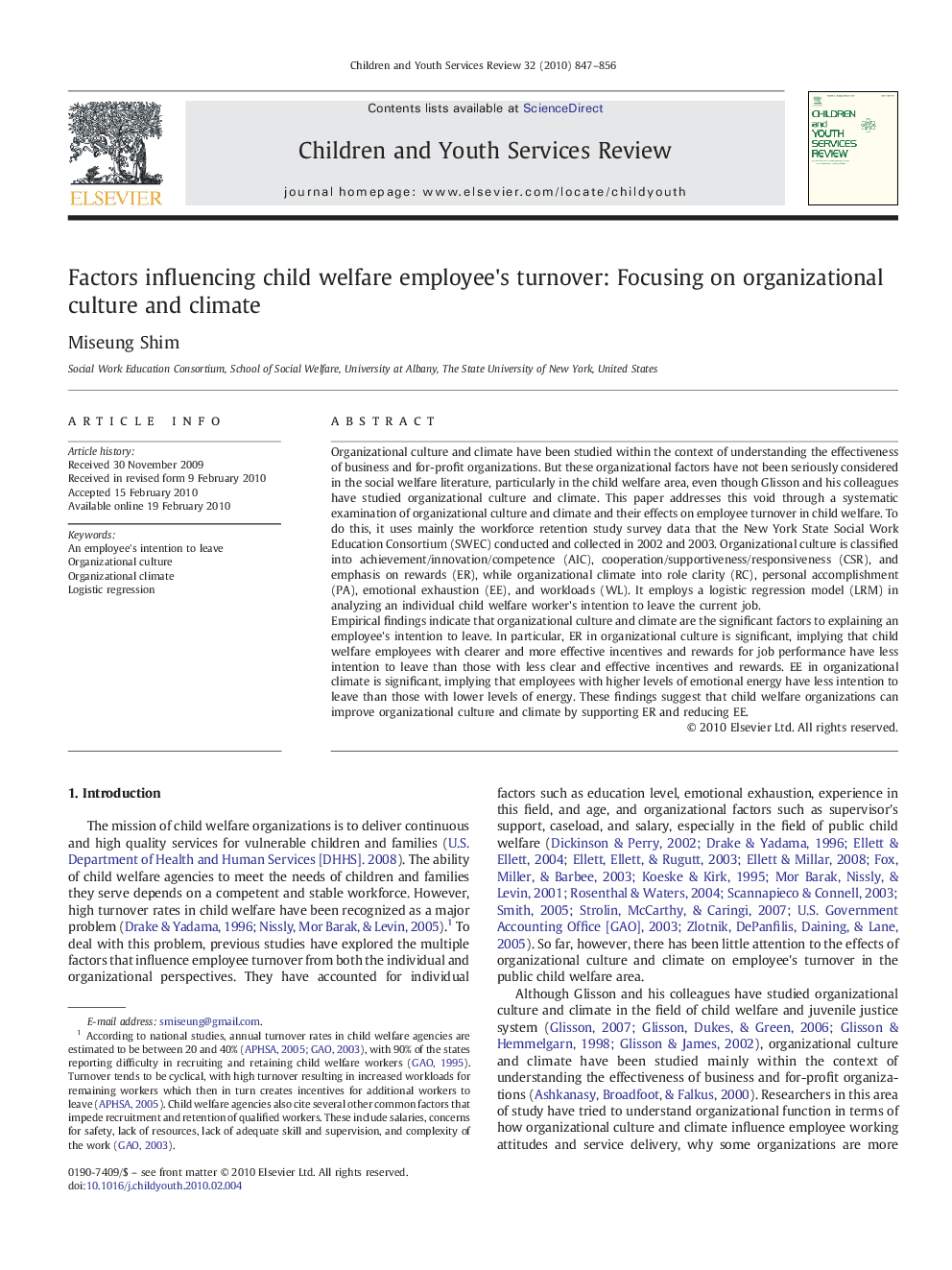| کد مقاله | کد نشریه | سال انتشار | مقاله انگلیسی | نسخه تمام متن |
|---|---|---|---|---|
| 346483 | 617820 | 2010 | 10 صفحه PDF | دانلود رایگان |

Organizational culture and climate have been studied within the context of understanding the effectiveness of business and for-profit organizations. But these organizational factors have not been seriously considered in the social welfare literature, particularly in the child welfare area, even though Glisson and his colleagues have studied organizational culture and climate. This paper addresses this void through a systematic examination of organizational culture and climate and their effects on employee turnover in child welfare. To do this, it uses mainly the workforce retention study survey data that the New York State Social Work Education Consortium (SWEC) conducted and collected in 2002 and 2003. Organizational culture is classified into achievement/innovation/competence (AIC), cooperation/supportiveness/responsiveness (CSR), and emphasis on rewards (ER), while organizational climate into role clarity (RC), personal accomplishment (PA), emotional exhaustion (EE), and workloads (WL). It employs a logistic regression model (LRM) in analyzing an individual child welfare worker's intention to leave the current job.Empirical findings indicate that organizational culture and climate are the significant factors to explaining an employee's intention to leave. In particular, ER in organizational culture is significant, implying that child welfare employees with clearer and more effective incentives and rewards for job performance have less intention to leave than those with less clear and effective incentives and rewards. EE in organizational climate is significant, implying that employees with higher levels of emotional energy have less intention to leave than those with lower levels of energy. These findings suggest that child welfare organizations can improve organizational culture and climate by supporting ER and reducing EE.
Journal: Children and Youth Services Review - Volume 32, Issue 6, June 2010, Pages 847–856